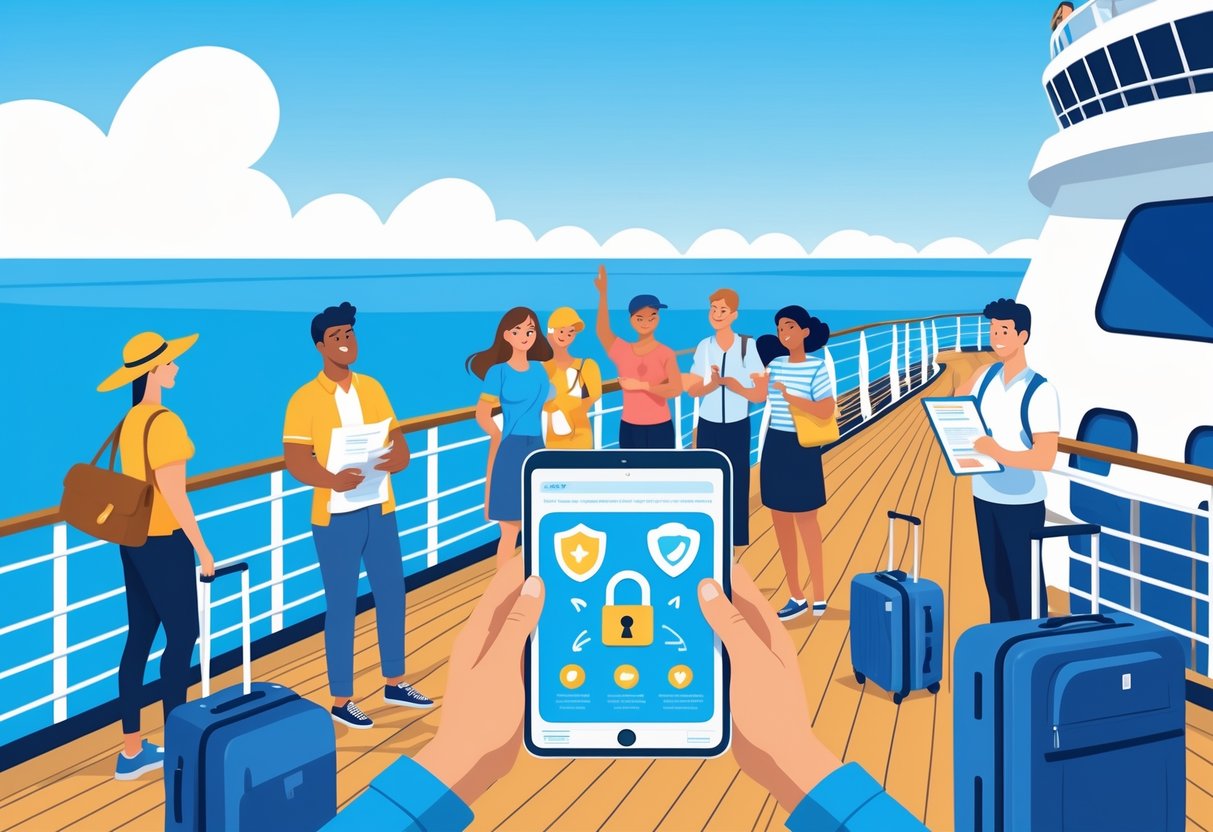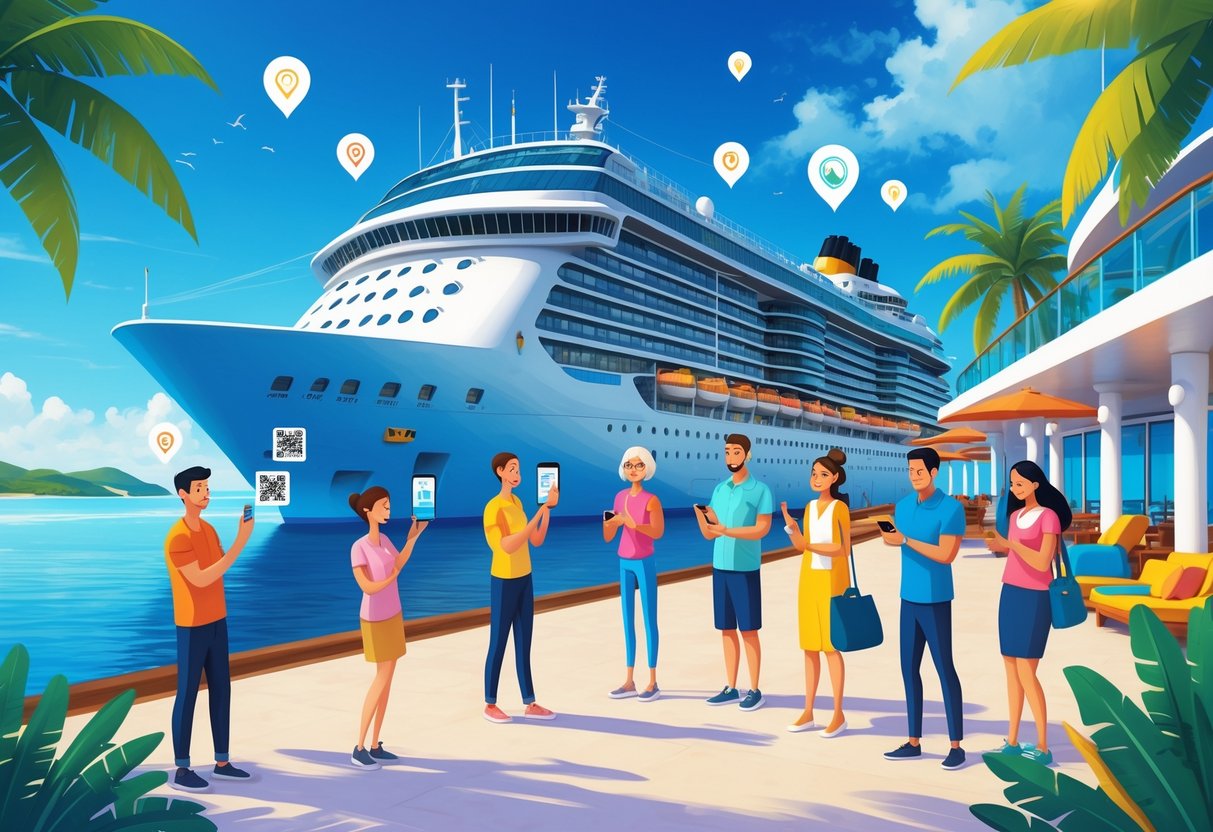
Tips for Preventing Spam and Scams
Cruise travelers are often targeted by phishing scams and unsolicited emails, especially around the time of booking and embarkation. To prevent spam, avoid using personal email addresses on public Wi-Fi and do not sign up for onboard promotions or contests unless they are clearly from the cruise line.
Be cautious with unfamiliar emails or text messages claiming to offer exclusive deals or upgrades. Never click on links or download attachments unless you are sure of the sender’s identity.
Report suspicious communications to the cruise line staff. Bring a list of official contact numbers for cruise and payment providers.
This allows quick verification if you receive messages or calls that seem suspicious. Following these spam prevention steps can reduce your risk of falling victim to scams, as emphasized in online cruise privacy guides.
Understanding Cookie Policies and Consent
Many cruise lines’ websites and onboard apps use cookies to track user activity, enhance booking experiences, and personalize recommendations. Passengers should review the cookie policy of any site or app before providing personal information.
Cookie consent pop-ups may appear during account creation—take the time to adjust settings and only allow necessary cookies. Cookies can store sensitive information such as login credentials or preferences, so minimizing permissions can improve privacy.
Opt to refuse third-party cookies where possible to limit the sharing of data across marketing networks. It is important to be aware that overriding default settings can help travelers retain greater control over their personal data.
Familiarizing yourself with privacy settings and regularly clearing cookies can reduce exposure to targeted advertising and tracking during your cruise.
Managing Privacy Settings and Personal Data

Protecting personal data on a cruise is essential, especially as ships increasingly offer Wi-Fi and digital services. Passengers should focus on tools and steps to control privacy, manage location sharing, and keep data like IP addresses and search history secure.
Using the Privacy Dashboard Effectively
Most cruise lines and digital services now provide a privacy dashboard where travelers can review, adjust, and delete personal data. This tool lets users control which permissions apps and services have, such as access to contacts or location.
It is important to log in and periodically review privacy settings. Ensure that only necessary information is visible to cruise staff or third parties.
Disable features or data sharing options not needed for your travel experience. A privacy dashboard typically allows users to:
- Opt out of marketing communications
- Limit access to sensitive personal data
- Adjust settings for shared photos or onboard social features
Taking these steps can help minimize unwanted data exposure and reduce the likelihood of targeted marketing or information leaks.
Geolocation Data and Privacy Controls
Many cruise apps and onboard systems request access to geolocation data for navigation, activity suggestions, or emergency alerts. Passengers should consider which services genuinely need this information and turn off location sharing for others.
On both smartphones and cruise-provided devices, it is wise to disable geolocation features unless they are critical for certain tasks. Review the permissions of each app, and set location access to “while using” or “never” as appropriate.
Be aware that connecting to public Wi-Fi, both onboard and in ports, can sometimes expose geolocation data. For additional protection, use a VPN to mask your location and encrypt connections.
Handling IP Address and Search Data
When travelers use onboard Wi-Fi, their IP address and search data may be logged by the cruise provider or third-party services. This information can be used for operational monitoring or marketing analysis.
To better protect browsing habits, clear browser caches and use private browsing modes. Many browsers also allow users to request Do Not Track signals, which may limit data retention by some sites.
Passengers should remember that even when privacy settings are properly configured, some search data might still be collected for operational or security reasons. For specific protections and tips, refer to guides like those from Cruise Critic on data privacy for cruisers.
Maximizing Your Experience Through Technology

Using the latest technology tools and platforms can help cruisers personalize their trip and manage preferences. Accessing relevant information and optimizing technology use on board ensures smoother planning and efficient service.
Personalized Advertising Preferences
Many cruise lines and travel platforms use personalized advertising systems to recommend on-board activities, shore excursions, and dining options that match your interests and travel history. Setting your preferences before departure, either through cruise portals or mobile apps, allows the line to suggest offers and events tailored to your needs.
Travelers benefit from choosing their communication preferences. Opting in for push notifications or email alerts about onboard events, sales, and shows ensures they don’t miss out on experiences or exclusive deals.
It’s important to review privacy settings and opt-out options for advertising when creating a cruise account or installing the cruise line’s app. Taking control of personalized advertising helps minimize unnecessary distractions during your trip.
Content Measurement and Analytics
Cruise companies now rely heavily on content measurement and analytics to monitor which onboard activities, restaurants, and services attract the most guests. Using this data, they adjust entertainment schedules, improve dining options, and optimize event timing.
Passengers often interact with ship apps or interactive kiosks for reservations or activity details. These platforms track preferences, time spent, click rates, and feedback, which helps the cruise line enhance future offerings.
This approach also means real-time updates, such as adding more slots for popular shows or extending hours for crowded venues, based on live analytics. When guests offer feedback through rating systems or surveys, this input gets analyzed to identify trends and improve services.
Audience Research and Services Development
Audience research plays a vital role in shaping what cruise lines offer today. They continually assess guest demographics, preferences, and expectations through digital surveys, social media engagement, and booking patterns.
By collecting and analyzing research data, cruise lines adapt their services development strategies in real time. Examples include introducing new wellness programs, updating kids’ clubs, or launching culinary experiences that reflect trending interests.
Onboard apps may use in-app surveys or real-time polls to fine-tune daily activities. This approach enables ships to quickly innovate and test new experiences targeted to their audience.
To learn more about passenger-focused technology strategies, explore cruise tech tips from cybersecurity and technology professionals at Cruise Tech Tips for 2025.



